Innovation in EV technology has been constantly accelerating the adoption of EVs globally. Modern-age EVs are much more than green vehicles and are cost-effective ways of transportation. With the advent of Bidirectional EV charging, now Electric Vehicle owners can make money from their EVs parked in garages by selling the excess energy back to the grid.
Further reducing the power demands, this revolutionary EV charging technology has the potential to reduce emissions caused by the primary power generation used to charge EVs. Thereby making EVs greener.
Here is a detailed explanation of the new Bidirectional EV charging technology and its use cases in the current scenario.
Bidirectional EV Charging Technology
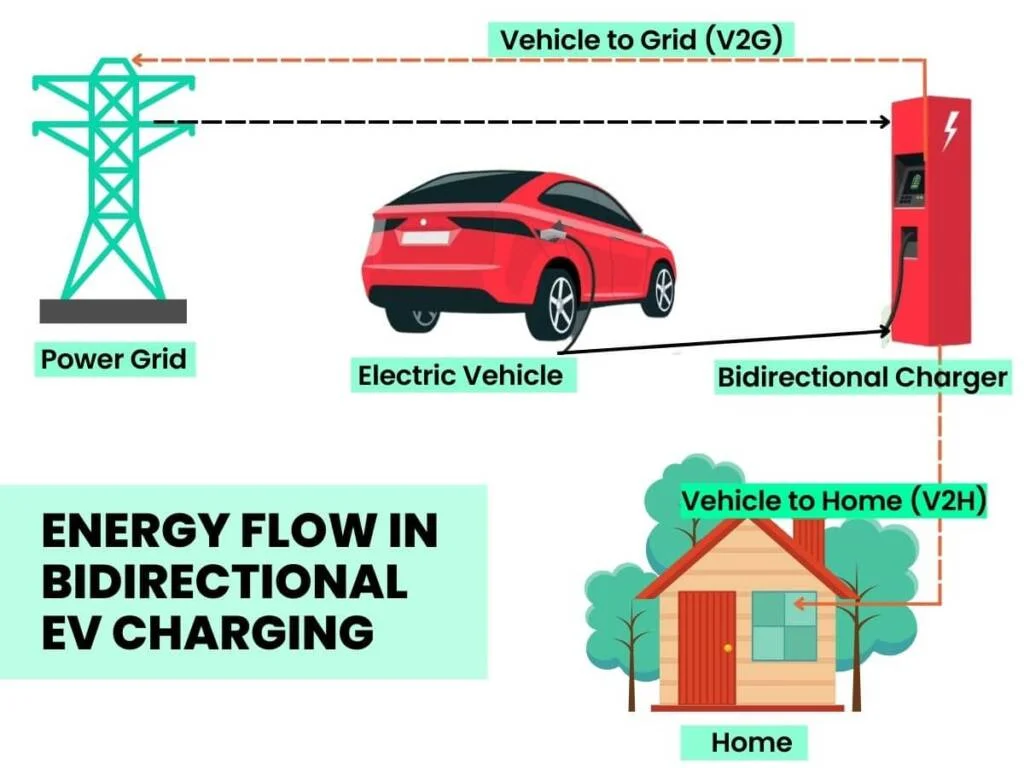
Bidirectional EV charging is a revolutionary electric vehicle charging technology that allows energy to flow two ways: From the Power grid to the EV, and from the electric vehicle to Grid(V2G) or to power Homes (V2H). A bidirectional EV charger allows energy to flow both ways, in and out of the vehicle compared to the popular one-way EV charging technology to power electric cars.
A huge amount of renewable energy is injected into the EV ecosystem to support the growing number of EVs which eventually causes increased pressure on our grids. Bidirectional EV charging technology balances and settles energy needs by converting Electric car batteries into energy storage systems.
Renewable energy can be stored in EV batteries to run the vehicle, and unused energy can be utilized to support the grid during peak hours. This energy cycle properly utilizes the potential of renewable energy injected into the ecosystem.
Bidirectional EV charging technology is an impactful technology to facilitate the transition to EVs and to manage demand on the local electricity networks. A bidirectional EV charger allows the full utilization of energy storage solutions to benefit the entire energy ecosystem.
Bidirectional EV charger Example: Wallbox Quasar
Bidirectional EV Charger: How does it work?
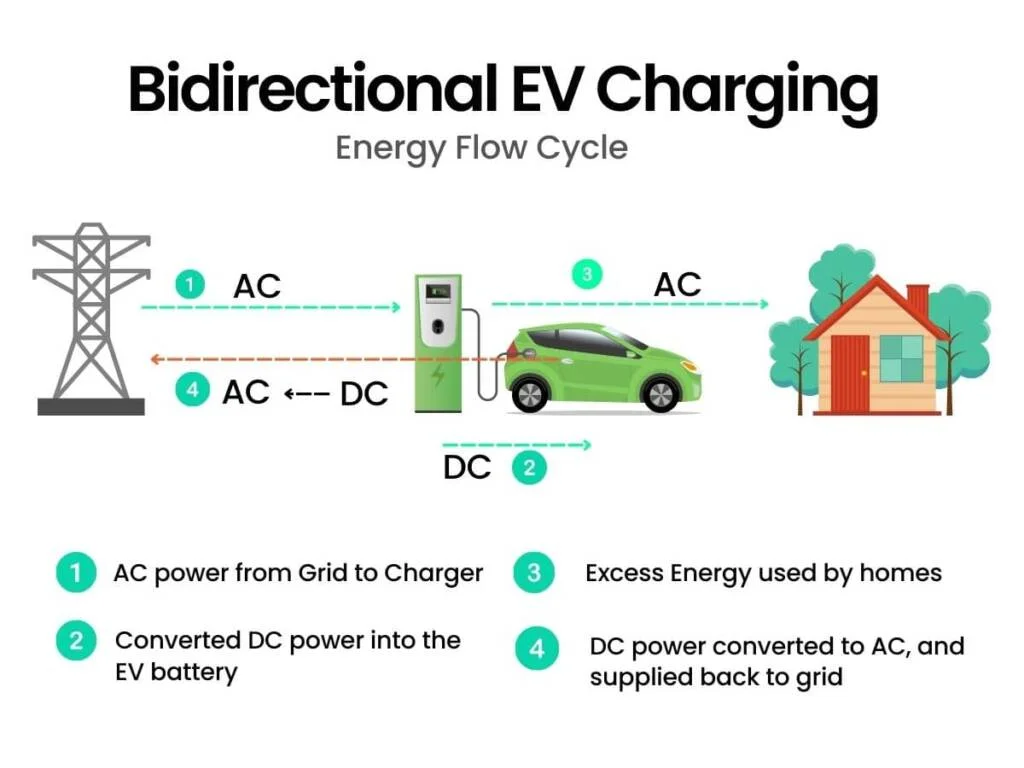
Bidirectional EV chargers have internal converters in them to convert the DC power into AC. Generally, the AC power from the grid is converted to DC via a converter present in the car or in the charging station itself. The reason for this conversion is that an EV battery only accepts DC power.
In EVs with bidirectional charging the energy stored in the EV battery to support the grid or power homes, the DC power is converted back to AC via an internal converter. These internal converters have the capability to control the incoming and outgoing power from the battery.
Bidirectional Charging: Use cases
Being the most efficient way to maximize the potential of renewable energy, bidirectional charging EV technology allows energy to flow in and out of the car. Two-way EV charging lowers the power demands by using EV batteries to power homes(V2H), and support the power grid (V2G).
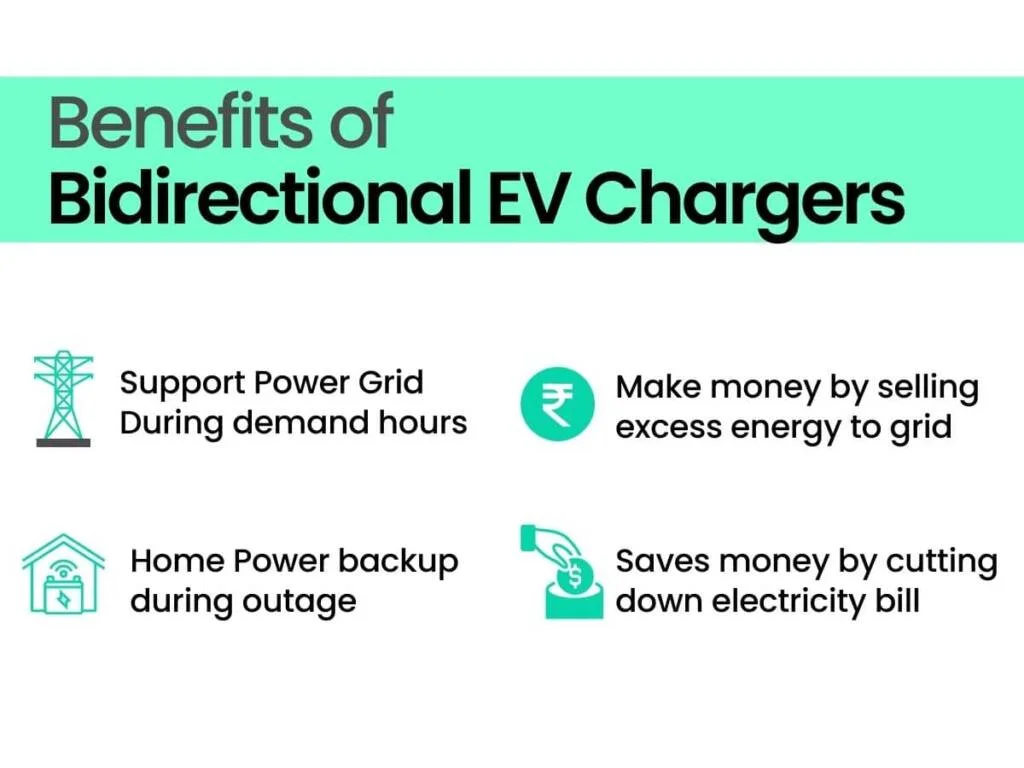
READ MORE:
Vehicles to home(V2H)
V2H provides significant benefits to individual EV owners by supplying power from an electric car’s battery to power homes during peak hours. The internal converter located in the bidirectional EV charger converts the DC power from EVs to AC current, used in homes.
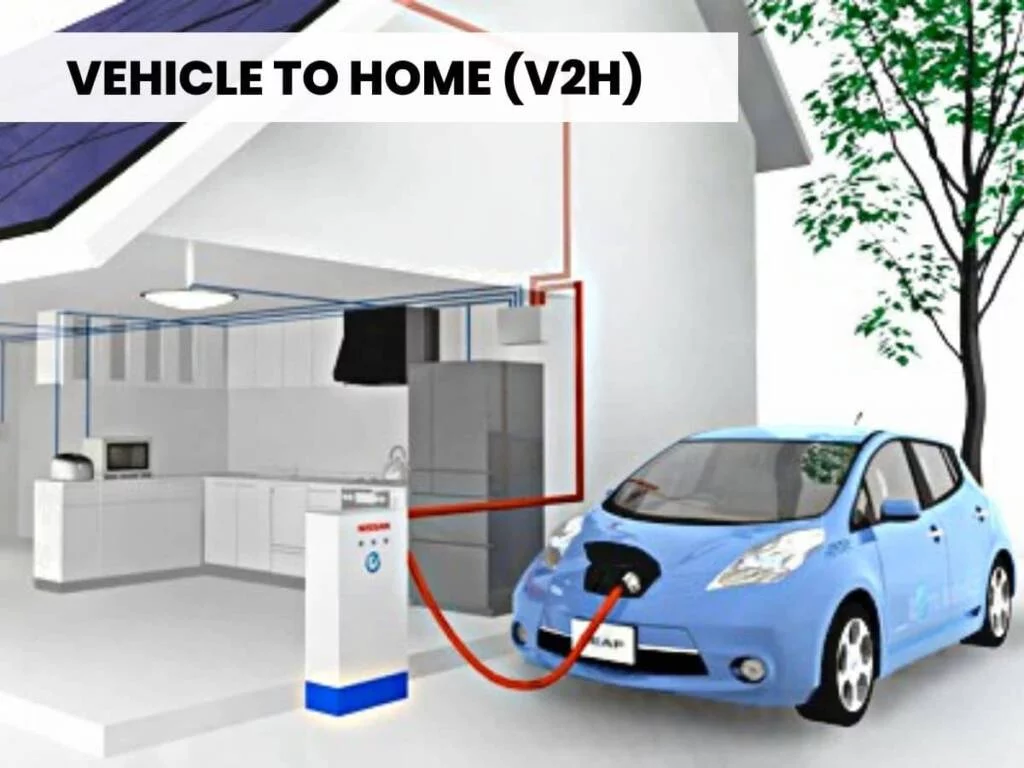
Because of the larger battery capacity of EV, a fully charged EV battery can supply power to a home for several hours. One can reduce energy consumption during peak hours when pressure on the grid is high by charging EVs at night during low demand hours and using that energy to power homes during the day via V2H.
V2H becomes more effective if we switch to renewable energy production and use it to charge EV batteries, and use it to power homes during peak hours.
Vehicle to Grid(V2G)
V2G has a great impact on the power grid as the excess energy stored in the electric car’s battery is supplied back to the grid during peak hours when the energy demand is high.
DC power from the electric car’s battery is supplied to the grid by converting it to AC by a converter located in the EV bidirectional charger to balance and settle the energy needs of the grid.
EV batteries charged during the night or low-demand hours support the grid during peak hours with high energy demands. By utilizing this bidirectional EV charging technology, parked EVs could become massive energy storage backups to support the grids.
V2G allows the EV owners to sell back the energy to the grid. Companies can use parked EVs to power a particular portion of the infrastructure during peak hours.
Efficient Renewable Energy use
Bidirectional EV charging technology is a means to fully utilize the renewable energy injected into the EV ecosystem. Energy from renewable sources depends on the time of the day and season.
One can store the excess energy generated by wind and solar to utilize later in times of high energy demand and peak hours. With Bidirectional EV charging, EV batteries can be fully utilized to store ad use the excess energy produced from renewable sources.
Benefits of Bidirectional Chargers:
Bidirectional EV chargers have revolutionized the EV charging ecosystem by empowering electric cars to do much more than just propelling a vehicle.

Here are some of the benefits of installing bidirectional EV chargers:
Supports Power Grid
There is increased pressure in the power grids to support the growing number of EVs in the nation. With bidirectional EV charging one can charge their EV during the off-peak hours and provide back the excess energy to the power grid during higher demand hours. This cycle omits the need for costly power grid upgrades to support the growing Ev ecosystem.
Make Money
One can make money from an electric car by selling the unused energy in EV batteries to the power grid during peak hours. The excess energy in the EV battery, charged during off-peak hours can be sold back to the grid via a bi-directional EV charger. The Source of primary EV charge can be either Solar panels, public EV chargers, or home power sources.
Power Backup
The V2H process can power up a house in case of emergency or during blackouts. The energy stored in the EVs can be utilized to feed energy to the home during peak hours. As a result, we always have a backup in case of any emergency power cut. By managing and storing energy in a better way we can solve the power shortage problem using the bidirectional charger.
Save Money
In countries with variable energy tariffs during the day, or Governments offering incentives for charging during low-demand hours, a bidirectional charger can save a lot of money.
In such countries, one can store energy in EV batteries by charging the vehicle during the night or during low-demand hours and use this energy to power the house during the day, you would be using very cheaper energy, which otherwise would be very costly during demand hours of the day. This will seriously lower your electricity bill over time.
Ecogears Take
With the growing number of EVs, energy storage and proper utilization is a topic to get concerned about. With time, portable bidirectional EV chargers can save a lot of money and renewable energy. Going with a bidirectional EV charger can be a viable option for EV owners considering the potential to generate income from electric vehicles by selling the excess energy back to the grid.
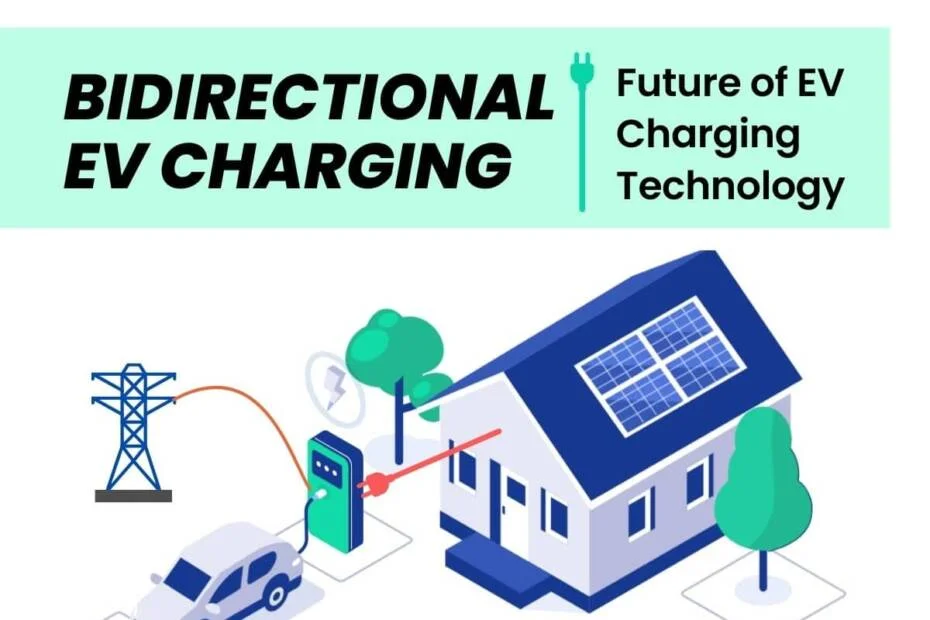
While this is a possibility, however, this needs lot of work in terms of:
1. Smart grid
2. The degradation of the battery will be faster, this will reduce the life of the battery. The initial outlay of owning the EV is already high, quick battery degradation will increase the cost of owning the vehicle, thereby preventing adoption
3. Managing the charge time of vehicles from grid will be difficult, not everyone will be able to charge when the pressure on the grid is low- the data is unknown, thereby can’t be commented on
4. Batteries giving energy back to the grid itself need to be smart
Great observation
Hopefully someday in the future GOI will look into it.
Optimistic enough
Regards,
Team ecogears